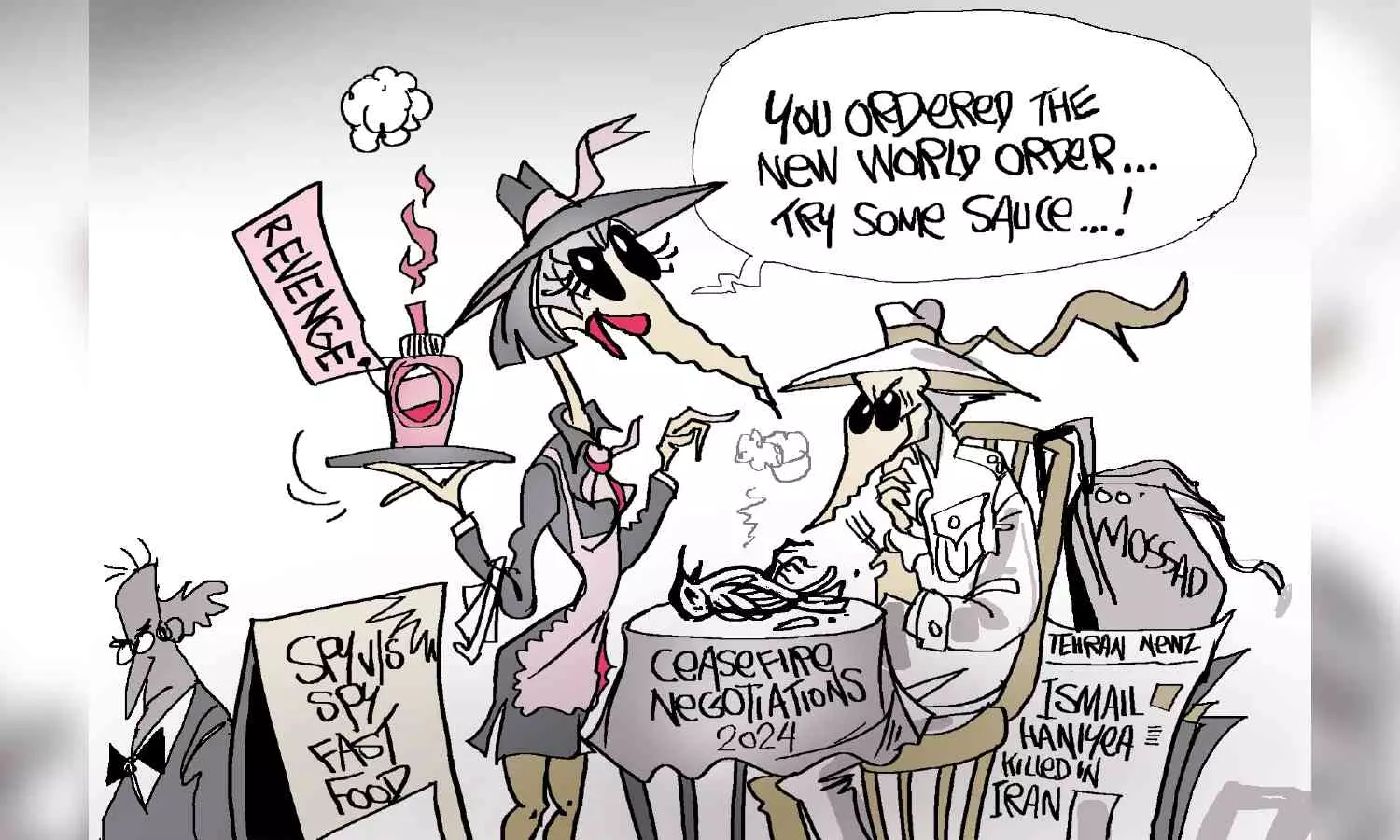Editorial: Quagmire of conflict
Recall that the Israeli leadership had pledged to neutralise Haniyeh and other leaders of Hamas in retaliation to the group's October 7 attack on southern Israel.;

Representative Image
In a development with far-reaching implications for the ongoing conflict between Israel and Hamas, the political leader of the Palestinian militant outfit, Ismail Haniyeh was assassinated during an airstrike in Tehran. Both Iran and Hamas have laid the blame for the killing on Israel, warning the country of dire consequences. It is an escalation that took place even as the US and other nations were racing against time to prevent an all-out regional war. Recall that the Israeli leadership had pledged to neutralise Haniyeh and other leaders of Hamas in retaliation to the group's October 7 attack on southern Israel.
The strike on Haniyeh was carried out just hours following Israel's targeting of a top commander in Iran's ally Hezbollah in the Lebanese capital Beirut. The aftershocks were felt strongly across the political landscape — in the Middle East, which is the epicentre of the decades-old conflict, and even in the US and China. A potentially explosive situation has now emerged amid the region's volatile, intertwined conflicts, amplified by the political importance of the latest target, the timing of the strike, and the decision to carry it out in Tehran, a sworn adversary of Israel for decades. Political observers haven't ruled out the potential of this killing to bring Iran and Israel into direct confrontation in the event of a retaliatory strike by Tehran.
This April, the two nations stoked the embers of a full-blown war when Israel hit Iran's embassy in Damascus. While Tehran retaliated, the incident led to an unprecedented exchange of missile strikes by both nations — a cycle that was seemingly contained by international powers before it could spin out of control. However, Haniyeh's killing has upset that delicate equation and raised fears that the incident might prompt Hamas to pull out of negotiations for a ceasefire and hostage release deal in the 10-month-old war in Gaza, which US mediators said were progressing well. The killing of the leader could add fuel to tensions between Israel and Hezbollah — especially after a rocket attack that killed 12 young people in the Israeli-controlled Golan Heights.
International diplomats tasked with defusing the explosive situation are now staring into the void, thanks to the double strikes in Beirut and Tehran which have, for all practical purposes, ‘killed’ hopes for a cease-fire and laid the groundwork for a devastating war in the region, which is now witnessing Houthis, Iraqi and Syrian militias firing rockets and drones at Israel and at American bases, most of which have been intercepted. Political analysts have expressed doubts over Hamas’s ability to step up attacks against Tel Aviv. But the free radical in this grouping is Tehran, which could seriously augment strikes through its allies — a coalition of Iranian-backed outfits, collectively referred to as the Axis of Resistance. These include Hezbollah, Hamas, Shiite militias in Iraq and Syria and the Houthi rebels who control a majority of Yemen.
Israel has a proven track record of carrying out military operations in Tehran, with its intelligence agency running a years-long assassination campaign against Iranian nuclear scientists. In 2020, a top Iranian military nuclear scientist, Mohsen Fakhrizadeh, was assassinated using a remote-controlled machine gun while travelling in a car outside Tehran.
Hamas officials have said that Haniyeh’s replacement will continue in the same policy of resistance against Israel. If the latest strike is anything to go by, it might be a while before the belligerents find themselves out of the woods. And it might be too late.

